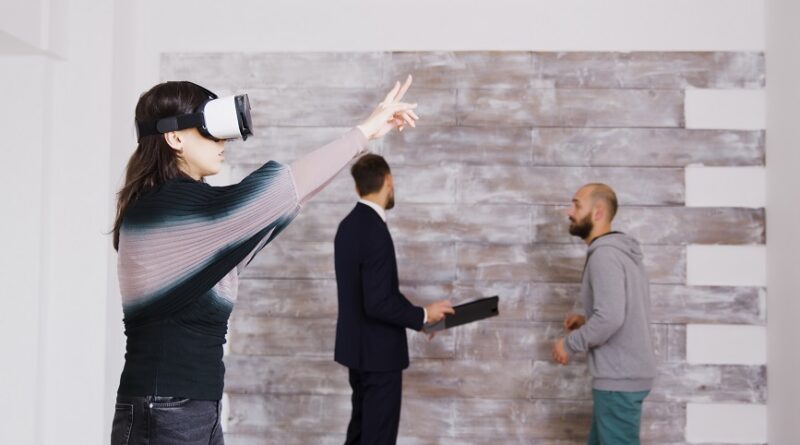Virtual Reality (VR) and Augmented Reality (AR)
Virtual Reality (VR) and Augmented Reality (AR) are two related technologies that create immersive, interactive experiences for users.
Virtual Reality (VR): Virtual reality (VR) is a technology that simulates a three-dimensional, computer-generated environment that a user can explore and interact with using a specialized headset or other devices. The experience is immersive and can be extremely realistic, giving the user the impression that they are actually inside the simulated environment.
Augmented Reality (AR): AR is a technology that superimposes digital content (like images, videos, or 3D models) on top of the real world. Using a smartphone, tablet camera, or AR glasses links digital content to physical objects, creating a seamless blend with reality.
Real-life Scenario:
Virtual Reality (VR):
Gaming: VR technology finds its application in diverse gaming genres, ranging from immersive first-person shooters and sports simulators to puzzle games.
Education: VR creates immersive educational experiences, enhancing learning effectiveness by making it engaging. For example, medical students can use VR to practice surgical procedures or to explore the human body in a more interactive way.
Travel: Travel companies leverage VR technology to offer virtual tours of destinations, enabling users to explore various locations and make informed travel decisions.
Therapy: Therapists use VR to treat anxiety and phobias by constructing controlled environments that assist patients in confronting and surmounting their fears.
Augmented Reality (AR):
Retail: Retailers use AR to create interactive product demonstrations that allow users to see how products will look in their homes or virtually try on clothes.
Advertising: Advertisers use augmented reality to create interactive and engaging campaigns. Users can, for example, scan an AR code to view a virtual advertisement or interact with branded content.
Navigation: AR enables location-based information delivery, such as real-time directions and highlighting nearby landmarks for users.
Manufacturing: AR assists workers in the manufacturing industry by providing digital instructions and visual aids, including overlaying machinery instructions to aid in maintenance or repair procedures.
Future Scope:
Increased Use in Industry: VR and AR have already found success in industries such as gaming and advertising, but there is room for even more widespread adoption in fields such as healthcare, education, and manufacturing. For example, it can be used to train manufacturing workers remotely or to simulate medical procedures.
Improved Hardware: As VR and AR technologies continue to improve, the hardware used to experience them will also become more advanced. This could include lighter and more comfortable headsets, more accurate motion sensors, and even wearable technology that can incorporate VR and AR experiences into everyday life.
Advancements in AI: The integration of artificial intelligence (AI) with VR and AR could lead to even more immersive and personalized experiences. For example, AI could be used to create more realistic virtual environments that respond more naturally and sophisticatedly to user input.
Mixed Reality: Mixed reality is a combination of VR and AR technologies, creating a blended environment that combines virtual and real-world elements. This could allow for even more immersive experiences that blend the best of both technologies.
Collaboration and Social Interaction: As VR and AR technologies become more widespread, there is potential for increased collaboration and social interaction in virtual spaces. This could include virtual meetings, conferences, and social gatherings that allow people to connect and interact from anywhere in the world.




